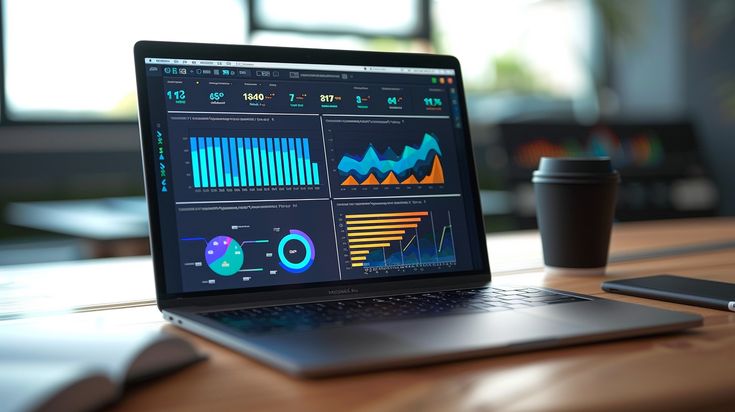Comparing Ecommerce Analytics Tools on a Budget
By Halie Johnson | Published on May 14, 2025 | Estimated 6 min read

Have you ever stared at your ecommerce analytics dashboard, feeling completely overwhelmed and unsure which numbers actually matter? You're not alone. As a small online business owner, tracking sales and customer behavior without breaking the bank can be challenging. But don't despair; the right analytics tool doesn't have to cost a fortune and can truly make your life easier. Let's break it down.
Understanding the Importance of Ecommerce Analytics
Ecommerce analytics are like the compass that guides your online store's decisions. Without clear insights, you're essentially guessing what's working and what's not—a risky strategy that can waste precious resources, especially if budgets are tight.
When used properly, analytics tools show you exactly where your customers come from, what products engage them, and where you're losing potential sales. Armed with this knowledge, you can strategically target your efforts, streamline your spending, and maximize your return on investment.
Imagine this scenario: you launch two new products simultaneously. At first glance, both seem equally promising. After a month, sales seem steady—but your analytics reveal something peculiar. One product drives higher initial traffic, but the other holds customers longer on the page, suggesting more genuine interest. This insight can inform your marketing decisions, product placements, or promotions—making the most of every penny you spend.
Key Features to Look for in Budget-Friendly Ecommerce Analytics Tools
Not all analytics tools are created equal—especially when you're working with limited funds. To help you find the right match, here are a few essential features to prioritize:
1. Ease-of-Use and Clarity
You shouldn't need a data science degree to use analytics effectively. Look for tools with intuitive dashboards, clear visual reporting, and straightforward navigation. If it's too complex to understand quickly, it'll likely collect digital dust.
2. Actionable Customer Insights
A great analytics tool does more than just show data. It provides actionable insights—clear guidance on what's working (like your latest marketing campaign) and what isn't (like abandoned carts). Prioritize tools that let you quickly identify personalized recommendations or customer trends.
3. Affordable Pricing Options
Budget-friendly doesn't mean sacrificing quality—it means transparent, scalable pricing that grows with your business needs. Look for tools offering either a free tier for small businesses or businesses just starting out, and affordable upgrades as your store expands.
4. Integration with Your Current Platform
Avoid the headache of compatibility issues. Choose analytics that easily integrate with your current ecommerce platforms, like Shopify, WooCommerce, or BigCommerce, saving you time and extra costs down the road.
Comparison of Top Budget-Friendly Ecommerce Analytics Tools
Now, let's dive into some budget-friendly ecommerce analytics tools. We'll compare their strengths, who they're best for, and exactly how they can help streamline your online selling experience:
Google Analytics (Free)
- Who it's for: Businesses seeking comprehensive insights without incurring cost.
- Why it's good: Robust, detailed reporting on customer acquisition, behavior, and conversions. Integration capabilities are extensive, and it's universally recognized.
- How to use it: Set up enhanced ecommerce tracking to get insights into the entire purchase journey—from first click to final checkout.
Hotjar (Free Plan Available)
- Who it's for: Ecommerce stores looking to understand visitor behavior through visual user insights.
- Why it's good: Hotjar provides heatmaps, screen recordings, and surveys—perfect features to spot UX issues and conversion bottlenecks visually.
- How to use it: Install Hotjar to discover why users abandon carts or click away from certain pages through real-time videos and heatmap analytics.
Kissmetrics (Affordable Starter Package)
- Who it's for: Business owners looking for detail-oriented insights about customer lifetime value and behavior analysis.
- Why it's good: Focused heavily on tracking individual customer behavior, Kissmetrics lets you nurture and retain customers more effectively.
- How to use it: Explore detailed customer lifecycle reports that help you build more personalized and targeted marketing campaigns.
Case Studies and Success Stories
Still skeptical if budget-friendly tools will significantly impact your bottom line? Let's explore a few real-life success stories:
Vintage Boutique Goes Local
A small vintage fashion boutique noticed through Google Analytics that most of their online traffic was coming from their home city, rather than nationally as they'd assumed. With this insight, they shifted their digital ad budget toward local Instagram and Facebook audiences. Result? They doubled their local online sales within two months, without adding budget strain.
Homeware Store UX Revamp
A modest online homeware shop employed Hotjar's free account and quickly saw through heatmaps that customers abandoned their checkout process at a specific step. Using these insights, they simplified their checkout page, removing unnecessary fields. Cart abandonment rates dropped dramatically—translating to noticeably higher revenue.
Conclusion
Running an online store on a tight budget doesn't mean navigating in the dark. By carefully selecting a reliable, affordable ecommerce analytics tool, you gain invaluable insights capable of completely changing your business trajectory. Remember, it's not about having all the data—it's about having the right data clearly presented, helping you make smarter decisions quickly.
“Ever since we learned to interpret the analytics, we've been making better decisions, faster. Our revenue growth reflects that—small tweaks really do matter.”— Anna, owner of a handmade goods ecommerce shop.
Frequently Asked Questions (FAQs)
Can I effectively use free ecommerce analytics tools?
Absolutely! Free analytics tools like Google Analytics and Hotjar provide extensive insights and excellent features suited for businesses starting out or maintaining tight budgets.
What is the easiest ecommerce analytics tool for beginners?
If you're looking for visual ease-of-use, tools like Hotjar provide intuitive tracking that's user-friendly. Google Analytics also provides powerful data but may require more initial effort to understand its vast capabilities fully.
Do all analytics tools integrate with Shopify and WooCommerce?
Most popular ecommerce analytics tools, including those listed here, offer integrations with Shopify and WooCommerce. Always double-check compatibility on each tool’s integration page or marketplace listing before setup.
Ready to Find Your Perfect Analytics Match?
Now that you're familiar with the landscape of budget-friendly ecommerce analytics tools, why not take the next step? Start by trying one or two options mentioned here—many offer free plans or trials. Soon, you'll see how data-driven decisions can significantly amplify your business growth.
Have you already tried one of these tools? Or perhaps, you're excited to experiment? I'd love to hear your experiences or any additional recommendations—so don’t forget to share your thoughts in the comments below!
Maybe You're Interested In Shopping At These Stores
About the Author: Halie Johnson
Halie Johnson is a Marketing Manager and the founder of RetailReviewHub, where she combines over a decade of experience in affiliate marketing and deal hunting to help users save money with confidence. With a deep understanding of consumer behavior and pricing strategy, Halie is dedicated to writing clear, unbiased product reviews and sharing the best deals across the web. When she’s not digging through coupon databases or analyzing offer performance, she enjoys testing products first-hand and writing savings guides that actually work. Follow Halie on her journey to smarter shopping!
Related Posts

Top Independence Day Deals 2025 – Save Big with Verified Coupons at RetailReviewHub
Independence Day is a prime time for shoppers to find great discounts...

Score Explosive July 4th Discounts – Curated Offers on RetailReviewHub
Independence Day 2025 brings a great chance to save on many products w...